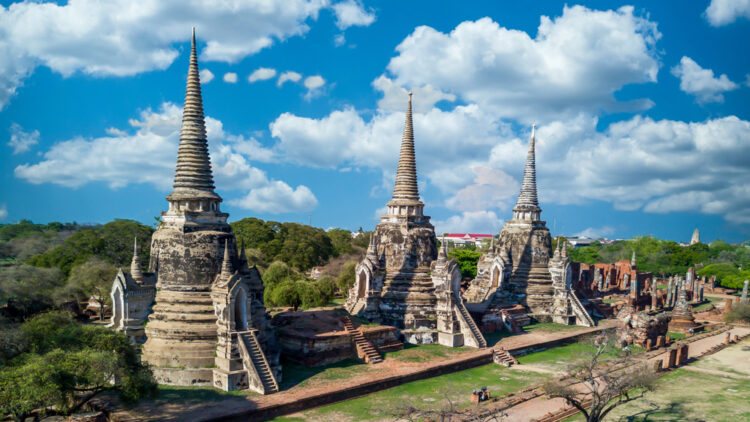Bangkok’s Wat Traimit is an unassuming temple housing a treasure of great cultural significance to the Buddhist world– the Golden Buddha. Officially titled Phra Phuttha Maha Suwanna Patimakon, the statue isn’t simply beautiful; it harbors a captivating story of disguise, war, and a serendipitous rediscovery.
Historians believe that the Golden Buddha was cast sometime during the Sukhothai Dynasty, an era of Thai history that spanned the 13th and 14th centuries. Thailand’s history, like much of Southeast Asia, is punctuated by periods of conflict and invasion. With the threat of the Burmese army looming in the mid-1700s, Thai monks at Ayutthaya (the old Thai capital) covered the Buddha in thick layers of plaster and stucco, transforming its radiant gold surface into the humble likeness of a clay Buddha. War ravaged Ayutthaya, and the disguised plaster Buddha was ignored.

Over time, the disguised Golden Buddha moved from the ruins of Ayutthaya to Bangkok, where it resided in several temples without fanfare. In 1935, it found a permanent home at Wat Traimit. Housed in a modest structure, it was considered a minor object of worship, a mere plaster Buddha among the multitude found in Thailand.
It wasn’t until 1955 that the Golden Buddha’s remarkable secret was revealed – and rather by accident. As the statue was being hoisted during a move to a new building, the ropes gave way, causing it to fall. The impact of the fall shattered the plaster shell. Monks and curious onlookers chipped away at the remaining plaster, revealing the golden statue it had concealed for centuries.

Once the concealing plaster was completely stripped away, the magnitude of the discover was clear. It measures nearly ten feet in height and weighing an astonishing five and a half tons. Crafted in the Sukhothai style, the image depicts the Buddha seated in the Bhumisparsha Mudra (the “Earth Witness” gesture), symbolizing the moment of his enlightenment beneath the Bodhi tree. The gold used is remarkably pure, and the artistry of its design reflects the height of the Sukhothai period’s artistic prowess. Interestingly, the statue is constructed from nine seamlessly fitted pieces, a testament to the foundry skills of its ancient creators.

After its rediscovery, the Golden Buddha received a new, grand home within Wat Traimit. A three-story building was constructed specifically to house the statue, where it resides as the temple’s central object of devotion. Visitors from all over the world now flock to Wat Traimit to witness the gleaming statue and pay homage to this extraordinary piece of Buddhist heritage. The temple complex also includes a museum dedicated to the statue’s history, the story of its rediscovery, and the legacy of Thai Buddhism.


